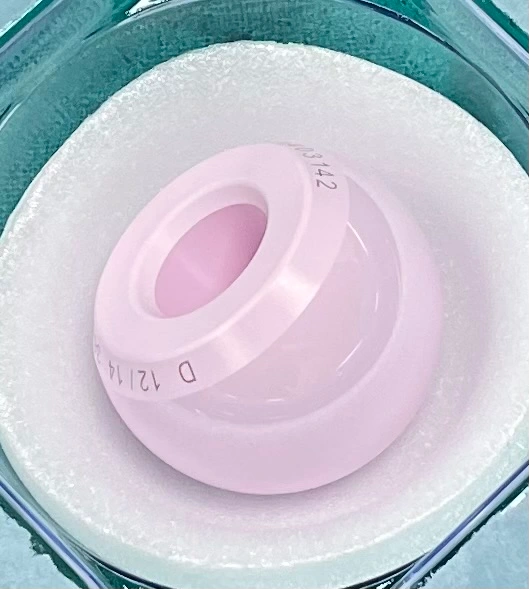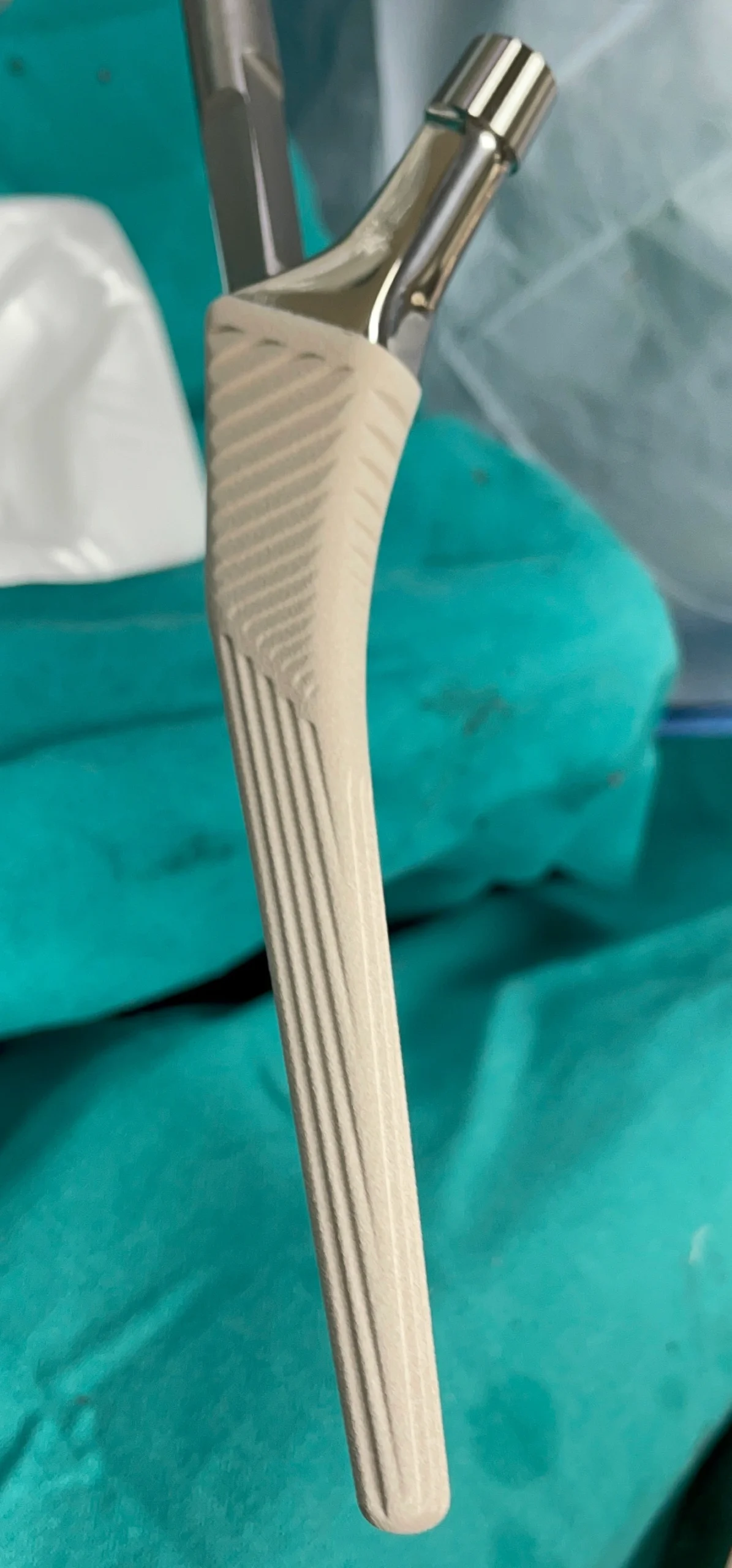The hip joint is one of the major joints of the human body & it enables us to perform multiple movements in daily life. For instance, the hip joint helps in walking, running, jogging, bending at your waist, and sitting on a chair. As its a weight-bearing joint and is used daily to maintain an active lifestyle, the cartilage of hip joint can undergo erosion or significant wear & tear. Erosion or wear & tear of the cartilage due to any reason is known as Arthritis. Due to cartilage erosion one may end up suffering from intense pain, leading to difficulty in doing even simple activities of daily living (ADL) like walking & driving. Although treatment advise of your doctor depends on the extent of damage to the hip joint, but in early stages, non-operative treatments may work. If all the non-operative treatments fail to give pain relief to the patient, and the extent of joint damage is severe, then Total hip replacement surgery (THR) or Total hip arthroplasty (THA) is considered to be the best solution. Modern Total hip replacement allows you to do all the activities after the surgery with no or very minimal life style restrictions.
Some of the common causes of chronic hip pain include Avascular necrosis (AVN), Rheumatoid Arthritis (RA), Osteoarthritis of hip, major hip injury or fracture ( e.g. neck of femur fracture, acetabulum fracture), and Ankylosing spondylitis (AS). Doctors generally recommend surgery as the last resort. If you are exploring options and have been medically advised to undergo total hip replacement (THR) surgery, this blog aims to inform you about everything you need to know about the surgical procedure.
Learning and understanding the surgical procedure for a total hip replacement can help you prepare better for the surgery and be at ease.
Besides, you can choose to visit the best orthopaedic surgeon for better understanding of your disease & its treatment. If you meet an expert hip replacement surgeon then your consultation also includes detailed counselling, discussion about the best implant for you & expected time for recovery after surgery. You must know that using latest surgical techniques & best quality US-FDA approved implants, can give you unbelievable recovery with in 2-3 weeks of Hip Replacement surgery.
If you are living in North India especially Delhi NCR, then you must consult Dr Pankaj Walecha at the Waleus Clinic, East Patel Nagar, New Delhi. He is one of the leading, and most trusted doctors for hip replacement surgery in Delhi & North India.
Evaluation before the surgery
It’s the first step in the surgical procedure for total hip replacement. The orthopaedic surgeon will evaluate several factors related to your hip condition. This includes your complete medical history including your general health, the severity & duration of hip pain, your ability to walk with or without support, movement restriction around your hip, Leg length discrepancy and its effect on your everyday activities. In addition to physical examination you will also be asked to do X-rays, scans and relevant blood tests. Generally, X-rays will show the extent of damage to the hip joint & also helps the doctor in planning the best implant for your surgery. If your doctor needs more clarity, then CT scan or MRI scan may be recommended.
Prosthesis or Implant
Determination of the best prosthesis or implant is an integral part of total hip replacement surgery. Implants have significantly evolved over time, now the materials used to make these implants can take the stress of daily life of a youngster as well & still last very long. Prosthesis fixation involves cemented or non-cemented options. In today’s times, uncemented or non-cemented implants are most preferred, in which press-fit femoral and acetabular components are implanted. Press-fit means that the bone is shaped in such a way that implant can take a firm grip in the bone.
Different combinations of bearing surfaces (means ball & the cup liner) used in these implants or prosthetic joints. It may be ceramic ball on ceramic liner, metal ball on metal liner (not preferred now), ceramic ball on highly cross linked polyethylene plastic liner (most preferred now), and metal ball on polyethylene liner (least preferred & is reserved for old patients above the age of 70-75 years).




Surgical Approaches
Many different surgical approaches are used by doctors for performing a successful THR. Some of the popular approaches are the Posterior, Direct Anterior Approach (DAA), Anterolateral, & Direct Lateral. Most commonly used is Posterior approach & unlike conventional posterior approach where all the muscles around the hip were cut, these days tissue preserving posterior approach is used at most of the centres of excellence for joint replacement surgery. It is sometimes referred to as minimally invasive surgery or MIS. These minimally invasive approaches are fast becoming popular worldwide due to less post-surgical pain & quick recovery time. Direct Anterior Approach is an upcoming approach for hip replacement surgery which is gaining acceptance among surgeons these days although it has its own complications, for example chances of femur fracture are higher in this approach. If you are in Delhi NCR, then your orthopaedic surgeon in Delhi will use the best surgical approach for you.
Step-by-Step Overview of Total Hip Replacement Surgical Procedure
On the day of the surgical procedure, you will be taken to the operation theatre complex almost an hour before the anaesthesia time. This is done to do the necessary safety checks before you are shifted inside the operation room or operation theatre (OT). The following steps are followed during the procedure.
- General anaesthesia or regional anaesthesia (Spinal or Combined spinal & epidural anaesthesia) will be given as per the direction of the surgeon.
- After the anaesthesia, you will be positioned on your side for the surgery. The whole lower limb & hip area is nicely cleaned with the antiseptic scrub for 5 to 7 minutes & then again antiseptic solution is applied to the operative area.
- All patients receive an appropriate antibiotic inside the OT & within one hour of the surgical incision.
- Then whole body of the patient is covered with sterile drapes & only the hip area which is to be operated is kept exposed.
- An incision will be made into your hip area, cutting minimum muscles on the way to your damaged hip joint. In modern hip replacement surgery, most of the hip muscles are protected.
- The damaged femoral head is cut & also the damaged cartilage from the acetabulum is removed using very precise instruments called reamers.
- After achieving proper shape of the bone, appropriate sized Uncemented cup (implant for the acetabulum) is impacted in the best position for your bony anatomy. After thoroughly washing & cleaning the cup, Highly cross linked poly liner is locked into this uncemented cup.
- Then the femur (thigh bone) is prepared to accept the uncemented stem using special broaches & appropriately sized stem is implanted in the femur
- Checks for stability & limb length are done using trial femoral heads of different dimensions. At this stage we equalise both of your legs & once that is ensured, then only we open the original ceramic ball head of appropriate size for final implantation.
- The hip joint is washed again with copious saline solution using pulsed lavage & all the bone debris is removed. Now the cut hip joint capsule & muscles are repaired back into their original place
- Post the total hip replacement surgery, you will be observed closely by a team of doctors & nurses. Appropriate antibiotics & pain medications are administered in the post-operative period
- X-rays will be done around 24 hours after the surgery to confirm the right positioning and sizing of the components in your hip.
- Majority of the patients feel a significant reduction of arthritic hip pain post-surgery & are able to bend their hip comfortably.
- Patients are allowed to take side turn with in 2 hours of the surgery & they can sleep comfortably on their side on the day of surgery itself. A DVT pump is applied to the legs of the patients to prevent the blood from clotting in the veins.
- Next morning, that’s within 16-18 hours of surgery, all the patients are made to come out of bed & walk with the help of a walker or crutch.
Generally, the actual total hip replacement surgery procedure takes around 1 hour. However, it may change with the type of surgery and the preference of the doctor.
Total Hip & Knee Replacement Surgery in Delhi
If you want to know which surgical approach is best for you in Delhi, consult Dr. Pankaj Walecha. He is one of the leading orthopaedic surgeons who have successfully treated countless patients. Also, you can get best-in-class treatment for arthritis and hip replacement surgery in Delhi at Waleus Clinic. Book an appointment today!
